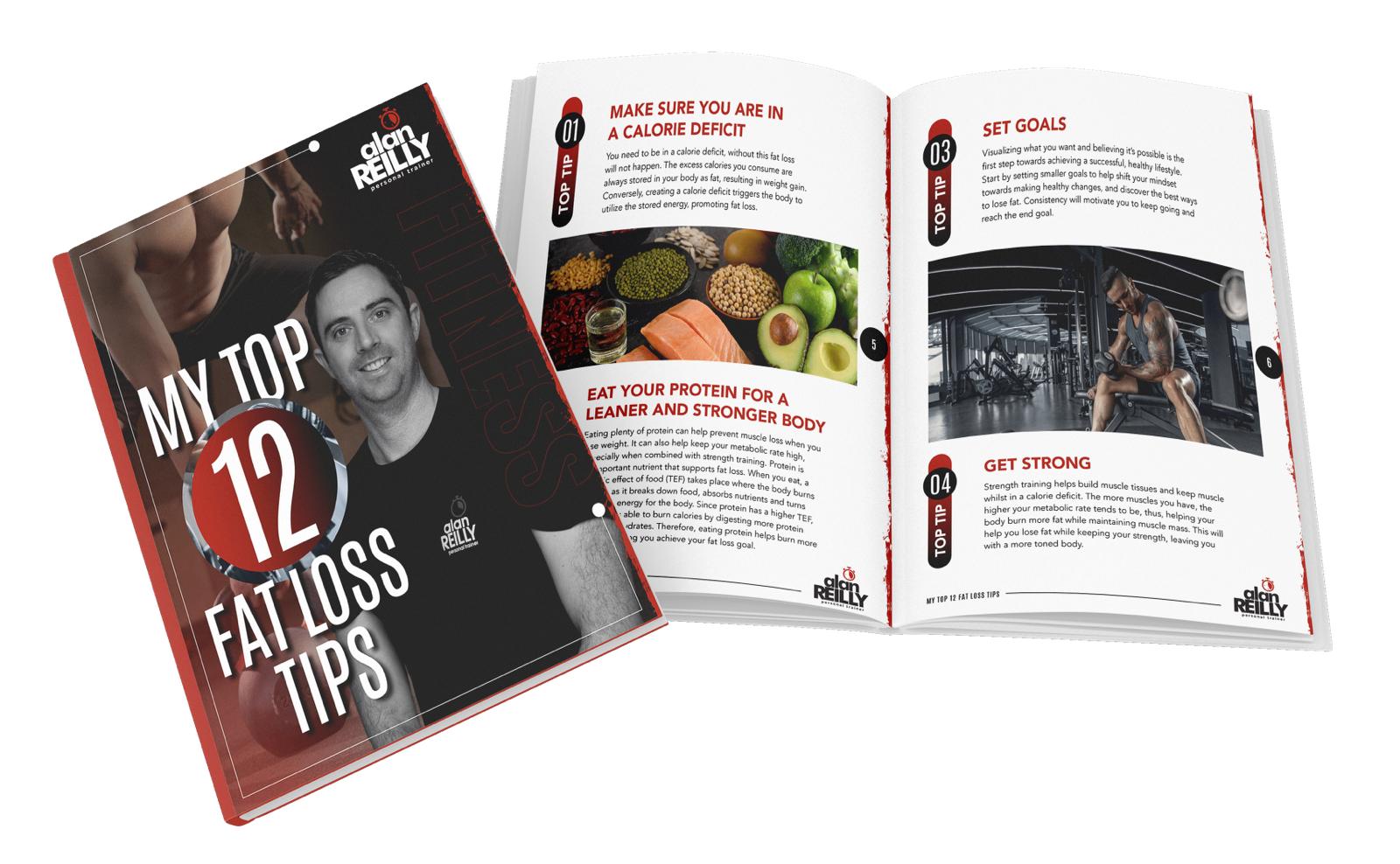Are you struggling with time to exercise?
- Details

Why having no time is a barrier to exercise?
A busy schedule involving work, family, travel, school, and other essential obligations is a common trend for many people today. With the tight commitments and realities of daily life, most of us have not been able to create time for exercise and live the desired fit life. People often argue that their busy schedules have left them with little to no time for workouts.
Lack of time is a common barrier to exercise. But the bigger question is, should we all give up our healthy lifestyle and blame it on lack of time for exercise? This would then leave us to suffer the consequences of an unhealthy lifestyle, including developing chronic diseases like obesity, high blood pressure, heart disease, and high cholesterol, among other risks. So, what is the way forward? You don’t need to worry because we have detailed research in this article to help you understand the strategies you can apply to help find time to exercise in the gym despite having a busy schedule. So, relax and read on!
Do we not have time, or is it just an excuse?
Many people argue that lack of time is a common barrier to physical activity. However, is it clear whether we don’t have time for exercise, or is it just an excuse? And the truth is, ‘No time for exercise’ is just an excuse. The problem is in our time management and priority planning. You need to revisit your daily to-do list and re-plan, prioritizing exercise. Another problem lies in the perception of what is an ideal exercise. Exercise does not just involve working out for hours in the gym every day of the week. Understanding the recommended exercise duration will go a long way in helping you re-plan and find more time for exercise.
If you are committed to living a healthy life, it is time to stop the ‘no time’ excuse and incorporate exercise into your busy work schedule, family, school, travel, and other social obligations. Whether you are a busy career person, business executive, student, or juggling between work and family, all you need is to decide what you want and commit to adopting a healthy lifestyle.
Tips on how to manage your time to fit in exercise?
Managing time to fit in and exercise is the first step to a healthy lifestyle. Here are some applicable tips to help you manage your time to fit in exercise:
- Organizing your diary
To create time for exercise, you need to start by organizing your diary and planning how to create time to exercise. And in setting your exercise time, you do not need to stress about exercising every day for long hours. The recommended exercise duration is 150 minutes per week, representing approximately 1% of your time. And the good news is that you could plan to go to the gym 3 times per week, cover your workout period, and you’ll get the best results. Be sure to put your committed exercise days on your to-do list.
- Schedule your workouts the same way you schedule your meetings
The main problem we face is that we ignore scheduling time for exercise. Purpose to start putting your workout on the calendar to help ensure it gets done.
- Prior planning
The key to managing your time and getting time to exercise lies in all that happens the night before. If you intend to wake up early and get to the gym to exercise, you must lay out everything you need to work out, including your gym wear and any other gear you might need. Have them ready before you sleep. It would help if you also made a plan for breakfast to ensure you save time in the morning.
- Join the most convenient gym possible
Being busy and with limited time for exercise, you need to focus on looking for the most convenient gym to help fit your schedule. For instance, it is essential to consider going to a gym close to your residence if you intend to work out early in the morning. If you want to exercise during lunch break, a gym close to your workplace is more convenient.
- Keep your workout clothes handy at all times
Running a tight schedule makes it challenging to keep up with specific workout times. You could have planned to get to the gym early, only to wake up to an urgent work demand or family commitment. But that does not mean you will not be able to create time in the course of the day and exercise. Therefore, consider having your workout wear ready at all times. You can keep a pair in your car or your bag. That way, you can cover up any inconvenienced exercise time whenever you get free time.
Ways to fit in exercise when you have a busy schedule?
We understand that a busy schedule can make it hectic to get time to exercise. After a long day engaged with work, family commitments, and other social activities, it is tempting to head home and watch a TV show to relax and sleep. But the challenge is we will neglect an essential aspect of our lives, living a healthy life. But the good news is you can plan yourself well and incorporate exercise into your busy schedule and don’t have to give up your daily activity or social moments by following the below tips:
- Wake up even earlier
How badly do you want to keep fit? If exercising is at the top of your to-do list and you have a busy day ahead, why not get up earlier and head directly to the gym? And you only need to sacrifice a few minutes for 3 days a week. A morning workout will leave you energized and even more productive during the day.
- Lunchtime escape
Do you have a lunch hour break? This is an excellent opportunity to make precious use of your 60 minutes by hitting the gym. Head direct to the gym and engage in a speedy HIIT session. This will help rejuvenate you mentally and physically. When you return to work, take some vegetables and a protein shake or meal bar. You will have decreased your calorie consumption and burnt some calories quickly.
- Make it a date
Are you committed to achieving your fitness goal? Why can you commit to social dates with a spouse, friend or relative and not your exercise time? What about planning fitness dates with your spouse or friend? Instead of meeting in a restaurant, meet in the gym and work out together. It is not only fans, but you will also be more accountable.
Why do you only need strength training 3 times per week to manage weight and improve body composition?
Starting your fitness journey can be exciting, and most of us find ourselves wondering how many times we need to strength train within a week. Most think strength training many times per week would help achieve the desired weight loss, build muscle mass, and stay healthy. But the truth is, strength training just 3 times per week is enough to manage weight and improve body composition. Although exercising regularly is essential in achieving results, overtraining makes it difficult for your body to recover between workouts. This can lead to fatigue, burnout, and possible injuries. Therefore, consider strength training 3 times per week and focus more on quality over quantity.
Is it Harder to Lose Weight During the Menopause?
- Details

Wondering why you are consistently adding weight during menopause even after sticking to your diet and exercise? Don’t worry! It is normal for women to gain some pounds before, during, and after menopause. This is greatly influenced by age, genetics, and the hormone-metabolism connection. As estrogen levels decrease, your metabolism slows, making it harder to lose weight, especially belly fat.
Does Menopause Lead To Weight Gain?
You may notice that it becomes more difficult to maintain weight as you age. Many women tend to gain weight around the menopause transition, particularly around the abdomen. This is greatly influenced by hormonal changes of menopause that make you more likely to gain weight. However, hormonal changes are not the only factor that triggers weight gain during menopause. Weight gain is also related to aging, lifestyle and genetic factors.
For instance, as we age, muscle mass typically diminishes while fat increases. As one loses muscle mass, they experience a slowdown in the rate at which the body uses calories, making it challenging to maintain a healthy weight. If you continue eating as you did before without increasing physical activity, you’ll likely gain weight.
Genetic factors also play a role in menopause weight gain. For example, if your parents or close family members carry extra weight, especially around the abdomen, you will likely do the same.
Other lifestyle factors like unhealthy eating, lack of exercise and lack of enough sleep may contribute to menopause weight gain.
What Is Perimenopause?
Perimenopause is the period around menopause when your body naturally transitions to menopause, marking the end of the reproductive years. Women start perimenopause at different ages. During perimenopause, the level of estrogen, which is the primary female hormone, tends to rise and fall unevenly. This results in menstrual irregularities. You may also experience menopause-like symptoms like vaginal dryness, hot flashes, and sleep problems. The perimenopause period is over when you’ve gone through 12 consecutive months without a menstrual period. At this point, you have officially reached menopause.
Why We Lose Muscle In Perimenopause?
Perimenopause is associated with a natural decline in bone density, muscle mass, and strength. During this phase of life, women experience a decline in estrogen levels linked to muscle loss. Ideally, estrogen promotes protein synthesis and inhibits protein breakdown, increasing muscle mass. As estrogen levels decrease during perimenopause, dysregulation in muscle protein is experienced, with the balance tipping away from protein synthesis toward protein degradation, contributing to an overall loss of muscle mass.
Does Menopause Slow Your Metabolism?
During menopause, one tends to experience a slowdown in metabolism. During this period, the changes in hormone levels cause a shift in your metabolic rate. For instance, estrogen plays a significant role in metabolism regulation. Therefore, as the estrogen level drops, you will experience a slowdown in the metabolic rate.
Does age slow your metabolism?
You may have heard people say that you can’t eat like your younger self as you age. This is because your metabolism tends to slow with age. As you age, you tend to lose muscle mass. As muscle mass decreases, the overall metabolic rate decreases as well. Similarly, as one gets older, one tends to be less active. When you are less active, you experience a decrease in calorie expenditure, contributing to a slower metabolism.
Why Resistance Training Is Important Whilst Going Through Menopause?
Menopause is when women commonly experience a decline in estrogen levels, resulting in bone density loss. This tends to increase the risk of osteoporosis, which causes issues with your bones that may lead to pain and increase your fracture risk. It is, therefore, essential to focus on keeping bones strong by keeping the muscles strong. This can best be achieved through resistance training. Resistance training also helps promote better flexibility by stretching the body's muscles. To get started with strength exercises, you can try the following:
- Bodyweight exercises such as squats, pushups and planks
- Weight lifting, for example, lifting kettlebells and dumbbells
- Exercising using resistance-based gym machines
- Doing yoga or Pilates
Some of the benefits of resistance training for women include:
- Increased skeletal muscle
Strength training helps minimize age-related muscle loss and potentially reverse muscle wasting effects common among women transitioning through the perimenopausal to postmenopausal stages.
- Better bone density
During menopause, the decline in estrogen results in a loss of bone density. Strength training helps increase bone mineral density.
- Improved pelvic floor health
Strength training helps activate and control women's pelvic floor muscles and deep core muscles.
- Lower injury risk and back pain
As strength training helps preserve skeletal muscles in older women, it, in turn, helps reduce the risk of falls, and in the event of a fall, the chances of a bone fracture are lesser.
Why we don’t need to change our approach with nutrition and training when trying to achieve fat loss?
There are so many misconceptions about fat loss. You always come across media content on fad diet, exercise, and magic fat-loss potions supported by celebrities and other personal success stories. Though most diet and exercise plans may help you lose fat while following them, once you resume your lifestyle, the weight starts to creep back on. That is because losing fat is not necessarily the problem, but rather achieving a long-term fat loss strategy. Ideally, managing your weight is a lifelong commitment that should not be supplemented by a few weeks of dieting and exercise to lose fat. Any strategy you adopt for fat loss should be something you’ll be able to follow for the rest of your life to avoid regaining any fat you lose. It’s essential to remember that a crash diet is mostly from lean muscle and water, not body fat.
Hypertrophy
- Details

What is hypertrophy?
Hypertrophy denotes the increase in the muscle cell size/muscle growth in response to stimuli such as training. Muscle hypertrophy is among bodybuilders’ and strength trainers’ fundamental goals. Is increasing muscle mass your training goal? Then you need to understand how to perform workouts for optimum hypertrophy.
Hypertrophy occurs in two steps; myofibrillar and sarcoplasmic hypertrophy. In myofibrillar hypertrophy, the stimuli trigger growth in the muscle fiber’s contractile aspects. This results in muscle strength increase and athlete’s speed owing to the increased ability and force with which the muscles contract. Sarcoplasmic hypertrophy involves the muscle fiber’s non-contractile elements growth. Such elements include the glycogen storage areas and energy production organelles. Sarcoplasmic hypertrophy enhances the muscle fiber’s endurance and energy storage capabilities. Ideal muscle hypertrophy increases the number and size of muscle fibers, thus, resulting in long-term muscle enlargement.
What are the 3 mechanisms of hypertrophy and how do they work?
The three mechanisms of complete muscle hypertrophy include mechanical tension, metabolic stress, and muscle damage.
Strength trainers create mechanical tension through exercise and heavy load lifting over time. The more time you subject a muscle to a heavy load, such as a dumbbell or barbell, the more mechanical tension. For maximum mechanical tension and growth, lift the loads/weights controllably and in a full array of motion.
In muscle-building, muscle damage is a fundamental aspect that results from resistance training; eccentric and concentric shrinkage. After hypertrophy training, one may experience delayed onset of muscle soreness owing to minor tears from muscle damage. Although both contraction types yield muscle damage, eccentric contractions exceed the concentric contractions degree of damage. Bodybuilders counter the muscle damage through negative repetitions to activate protein synthesis that initiates damaged muscle repair.
During resistance training, one may experience burnout toward the end of the training set. The continuous contraction and relaxation of muscles result in a blood pooling impact from within the muscle cell. As a result, muscle blood flow is restricted (occlusion). This means there is no oxygenated blood to fuel the consistent muscle contractions. Occlusion subjects the muscle to metabolic stress because of the accumulation of metabolites such as hydrogen ions and lactase. Metabolic stress affects the anabolic process.
What is the recommended about of sets per week for each muscle group?
The recommended number of sets per week for every muscle group depends on various factors, including your skeletal figure and genetic endowment. Nevertheless, the following are the recommended sets for each muscle group weekly.
• 10-15 sets per week for each muscle group if you are training thoroughly in less than a year.
• 15-20 sets weekly if you’re the period you have trained thoroughly is between one and five years.
• 20-25 sets each week if you have thoroughly trained for over five years.
• 25-30 sets per week for elite power lifters or bodybuilders.
If you are an athlete and trying to determine your appropriate sets per week relative to bodybuilders and powerlifters, you need to consider other factors such as:
1. Your specific sports training.
2. Caloric supply.
3. The level of stress in your life.
Why is there no perfect training split?
There are many ways to kill a rat. Athletes and trainers have different strategies for training split. Whereas some bodybuilders prefer super-heavy lifting at low repetitions, others do light weights but increase the number of repetitions. The rest period between sets also varies with individuals.
The only thing common among bodybuilders is the training frequency. The other variables may be unique for each bodybuilder. Trainers stick to their training patterns, rest periods between sets, and the specific type of training. Since there is no perfect training split, you must find and adhere to what works for you for the best results.
Why is recovery important for hypertrophy?
Hypertrophy trainers understand that muscle growth occurs during rest periods between sets rather than when working out. Continuous muscle stress adapts the cells better to respond well to exercise stimuli. Muscles get micro-tears during exercise and require time for healing and recovery to prevent inflammation, exhaustion, and swelling of the muscles.
Rest deficiency may subject you to overstraining syndrome and decrease your performance. If you develop the overtraining syndrome, you may suffer other related issues, including chronic muscle and joint pains, constant exhaustion, and suppressed immune system.
Recovery helps to prevent the adverse effects of workout processes and promotes muscle healing and growth. You can take a two- or three-day break from intensive training to promote recovery for optimum muscle repair and mass growth. However, this depends on whether the training/exercise is on your list of strategies for emotional health in the long run.
If workouts are part of your long-term emotional and mental health strategies, active rest periods involving activities like brisk walking and yoga can boost muscle repair and growth. While it is healthy to work out, beware of strenuous activities that can subject your body to stress or overstrain and activate the nervous system. When training, the happy hormone (endorphins) is activated and improves mood.
On the contrary, overstraining results in performance decline, reduces your appetite, and makes you irritable and unable to sleep well. All these effects make you fatigued and mentally exhausted.
The bottom line is that every hypertrophy trainer should understand their specific goals and adopt training spits and rest periods between sets that best work for them. Moreover, adequate rest and recovery periods are fundamental for the repair and growth of muscle cells.
Is Creatine worth the Hype?
- Details

What is Creatine?
Have you ever wondered how our muscles gain energy? It could sound like a mystery, but it is not. There is an important chemical called creatine that is naturally found in the human body, red meat, and seafood. Creatine significantly helps the muscles produce energy, thus improving exercise performance and muscle mass. Many people are unfamiliar with creatine and may not consider it that important. However, this is different for those in the sporting world. Creatine is quite popular in the sporting world and is among the most highly consumed supplements. With the increased use of creatine supplements, it is essential to understand what it does and the best type of creatine to use. In this article, I explained why you should consider taking creatine, the best type, and when to take it. So relax, and read on!
What is the Science of Creatine?
When you ask people why they are taking creatine, you will probably get responses like “to make me stronger.” When you ask them how creatine will achieve this, the highest chance is that they don’t know. This prompts the question on the science of creatine.
Ideally, muscles require energy for their various functions, like muscle contractions. Typically, muscles get their energy from Adenosine Triphosphate (ATP) molecules. Muscles are only able to store a very tiny amount of ATP and to keep them functional, they need a constant supply of ATP. In this essence, creatine becomes of interest. Creatine is usually converted into creatine phosphate or phosphocreatine and stored in the muscles, where it is used for energy. When a person is engaged in high-intensity, short-duration exercises like weight lifting or sprinting, phosphocreatine is used as a source of ATP. Phosphocreatine is one of the quickest and highest-yielding sources of energy for muscles.
A List of Reasons Why You Should Take Creatine?
So, what exactly is the importance of creatine, and why should you take it? Creatine has several potential benefits, especially for people who engage in high-intensity exercise and sports. Here is an analysis of the reasons why you might consider taking creatine. Have a glance!
- Improved athletic performance. Creatine has been scientifically proven to increase the strength of muscles, power, and endurance. Therefore, in high-intensity exercises like heavy weightlifting, sprinting and jumping, one is able to enjoy improved athletic performance.
- Increased muscle mass. Creatine helps promote muscle growth and hypertrophy by increasing muscle protein synthesis. As a result, one experiences increased muscle mass. This comes as a relief to athletes and bodybuilders who are constantly working towards improving their muscle mass.
- Promotes muscle recovery. During intense exercise, the muscles strain and can easily suffer damage and inflammation. Creatine plays a significant role in helping reduce muscle damage by ensuring a constant supply of energy in the muscles, which reduces muscle soreness.
- Improved brain function. Studies have shown that creatine is involved in energy metabolism in the brain and helps improve cognitive function and memory in people. Older adults and vegetarians constantly take a creatine supplements to support their brain health and quality of life.
- Reduced Fatigue. Low energy levels tend to cause fatigue. Intake of creatine helps improve energy levels, especially during high-intensity exercise, promoting longer endurance and better performance.
- Safe and effective. For any dietary supplement, it is essential to understand if it is safe for our bodies and whether it is effective. Various research studies have proven that creatine is safe and effective and has been used by athletes, bodybuilders, and fitness enthusiasts for many years.
What’s the Best Type of Creatine to Take?
Although creatine is naturally produced in our bodies and available in food sources like red meat and seafood, it is widely consumed as a dietary supplement to increase one’s body stores. Many types of creatine supplements are available, making it hard to choose one. Are you confused by all the fancy creatine supplements available in the market? We have done the heavy lifting for you, and through research, we have recommended the best one for you. Check it out!
Among the many types of creatine available in the market, we identified creatine monohydrate as the most commonly used and researched form. Creatine monohydrate is effective and safe for most people when taken as directed. Ideally, creatine monohydrate is the best type of creatine since it has been extensively studied and proven safe and effective. It is also widely available and affordable.
When should you Take Creatine?
Although creatine can be taken at any time of the day, it is essential to consider when it may be most effective. Studies show that the recommended time to take creatine is before or after your workout. For instance, you can take creatine 30 minutes before an exercise to help prepare your muscles for large bursts of energy when performing a high-intensity activity. When you take creatine after a workout, it helps in your recovery when muscles are growing and rebuilding.
Why Creatine can help with Hypertrophy and Strength?
Creatine supplementation significantly increases the phosphocreatine ratio in skeletal muscle tissues. This helps to increase the capacity for rapid adenosine triphosphate (ATP) resynthesis during high-intensity exercise tasks. Therefore, creatine supplementation has several benefits related to muscle hypertrophy and strength.
Creatine supplementation significantly promotes water retention in muscle tissue, increasing muscle volume.
Similarly, creatine supplementation promotes muscle endurance, which helps increase training volume, an essential factor in muscle growth.
Therefore, creatine supplementation helps with hypertrophy and strength by increasing muscle cell hydration and improving muscular endurance during exercise.
Bottom Line
It is important to note that creatine may work differently for different people. Therefore, as with any supplement, speaking with a healthcare professional for further guidance before taking creatine is essential.
The Importance of Sleep for Health and Performance
- Details

The Importance of Sleep for Health and Performance
Did you know that enough sleep is essential for optimum health and well-being? But how much sleep is really enough for you?
At any given age in your life, what happens when sleeping will partially influence how you feel when awake. When you sleep, the body’s activities support your physical health and mental well-being. Children and teens require adequate sleep for optimal growth and development. Sleep affects almost every system of your body, including the heart and blood circulation, metabolism, immune, digestion, and respiratory systems.
Researchers have found a link between quality sleep and memory, judgment, mood, learning, and performance. Sleeping is essential for the body to rest, recover, and rejuvenate. Get enough sleep to maintain ideal health and avoid sleep deprivation health risks.
Why Sleep Is Important for Your Health?
Sleep supports your physical health and brain functionality in your lifetime. The quality of sleep you get every day affects your reaction to situations, thinking, work quality, learning, memory, and social relationships, among other life aspects. The points below prove why you need sufficient and quality sleep every day for your entire life.
- Sleep affects your heart and blood circulation
The body’s parasympathetic system is activated during sleep. The sleep mode is associated with low blood pressure and heart rate. The sympathetic system is activated when we are awake, leading to increased blood pressure and heart rate. Sleep deficiency or frequent wake-ups at night has been linked to an increased risk of hypertension, coronary heart disease, stroke, and obesity.
- Sleep and body hormones
The body produces different hormones at the various stages of our growth. Though some of these hormones have a 24-hour production pattern, others are produced when awake. For instance, the body produces cortisol, a hormone that helps us wake up and make us alert. Getting enough sleep at different ages prevents hormonal imbalance.
- Enough and quality sleep and metabolism
Different studies link insufficient quality sleep to higher ghrelin, leptin, and other hunger-stimulating hormones, insulin resistance, overeating, metabolic syndrome, and physical inactivity. This exposes you to other health risks, including being overweight, obesity, and diabetes.
- Sleep affects memory and thinking
Sufficient quality sleep boost learning and memory. If you do not sleep enough, you are setting yourself up for difficulties concentrating, remembering things, and thinking clearly. Any time you think of extending your favorite movie, job, or any other activities to late nights, remember that sleep deficiency and deprivation affect your overall performance.
Why Sleep Is Important for Fat Loss
Sleep deficiency may trigger hormonal imbalance, a risk factor for overeating and unhealthy weight gain. Sleeping less than our bodies require may not only make us consume more food but also suppress our immunity. Getting adequate and quality sleep helps you resist the urge to eat foods that increase saturated fat levels in your body. Researchers suggest that people who get less than seven hours of sleep daily can eat 300 extra calories more than those who sleep adequately.
Why is Sleep Important for Muscle Hypertrophy?
Muscle hypertrophy happens when the rate of muscle synthesis is more than muscle protein breakdown. In addition to resistance training and eating protein, muscle hypertrophy can be achieved through enough quality sleep.
Are you an athlete aiming at muscle building? Then you have to understand that poor sleep quality and inadequate sleep may reduce your muscles and weaken them. Your muscles need adequate rest to recover and grow. Sleep is fundamental for both training and overall well-being.
Sleep directly affects muscle recovery in that, the body releases insulin that plies amino acids into muscle cells for protein synthesis and storage. This promotes muscle recovery. In the rest mode, the body also tends to reduce more growth hormones. If you reduce your sleep duration, your body may become more catabolic and hinder the growth and recovery of your muscles during intensive training.
Sleep deficiency also leads to less protein production, hence, slow and improper muscle growth. Lacking enough quality sleep awakens protein degradation and impedes protein synthesis passages. This impact leads to the ultimate loss of muscle mass and hinders muscle recovery after injury or tear.
What Happens to Your Body If You Don’t Get Enough Sleep?
Quality sleep deficiency and deprivation have many adverse effects on your body, including reduced sex drive, unhealthy weight gain, and suppressed immunity. Below are the details on how lack of sleep may affect your body.
- Lacking enough quality sleep lowers the body’s immune system and makes you more prone to illnesses.
- Both undersleeping and oversleeping adversely affect your heart health and increase your risk of coronary heart disease and stroke.
- Sleep deficiency impairs your memory, reasoning, concentration, decision-making, problem-solving, alertness, and other brain functions.
Generally, lacking adequate and quality sleep exposes your body to chronic diseases such as hypertension, kidney disease, depression, heart disease, obesity, and stroke. Researchers associate sleep deficiency with a higher risk of injury and fatal mistakes among children, adults, and teens on Pi
How much sleep is needed?
The average number of sleeping hours your body needs per day varies with age. Remember, it is not only the sleep quantity that matters to your overall mental health and physical well-being but also the quality.
How much sleep is recommended for your age group? Experts give the following suggestions regarding sleep.
- 14-17 hours (naps inclusive) of sleep for newborns up to 3 months old.
- 12-16 hours for infants between 4-12 months.
- 11-14 hours for toddlers between 1-2 years.
- 10-13 hours for preschoolers between 3-5 years.
- 9-12 hours for scholars aged 6-12 years.
- 8-10 hours for teens aged 13-18 hours.
- 7 hours or more for adults between 18-60 years.
- 7-9 hours for those between 61 and 64 years.
- 7-8 hours for the aging from 64 years and above.
Poor sleep quality may manifest through restlessness, frequent waking up at night, and other sleep disorders. Develop better sleep habits depending on your age for optimal mental health and physical well-being. In case of extreme sleep disorders, seek professional advice.


